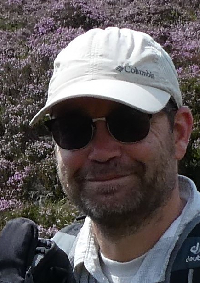05-MMG-SS1 Sedimentary Structures of Shelves and Passive Margins
Representative Tilmann Schwenk
The central focus of this module is the transport and deposition of sediment particles on passive margins and shelves with respect to external and internal forces, thereby integrating sedimentological, geophysical and actuo-paleontological results. One course is the training of the (integrated) interpretation of all kind of seismo-acoustic data as multibeam, sidescan sonar, sediment echosounder and high-resolution seismic systems. A second course introduces the main features of carbonate and terrigenous sedimentation patterns in tropical and non-tropical shelf environments along latitudinal and bathymetrical traverses. Analysis of sediment dynamics and ecological pattern on shelves provide important links between terrestrial and oceanic responses to global climate forcing. Within the third course sediment dynamics at passive margins are analyzed. In particular, a variety of gravity-driven mass flows and contouritic deposition are discussed in terms of evolutionary models and a processed-based understanding.
Students know how to interprete seismo-acoustic data
Students are able to analyse sedimentary facies
Students are able to evaluate of conceptual sedimentation models for tropical and non-tropical carbonaceous and siliciclastic shelf settings
Students have gained processed-based understanding of transport and depositional processes at passive margins
basic knowledge of sedimentology and geophysics
Course Type 1: Lecture, Exercise (L+E) 0.6 SWS ( 8.4 h)
Course Type 2: Lecture, Exercise (L+E) 1.7 SWS ( 23.8 h)
Course Type 3: Lecture, Exercise (L+E) 1.7 SWS ( 23.8 h)
Tutorial(s): -
Workload:56.0 h presence time
30.0 h self-study
94.0 h exam workload
180 h total workload
combination exam
exam elements: 2
SL: 0
50 % oral exam
50 % project exercise report
Nittrouer et al., 2008: Continental margin sedimentation
E.J.W. Jones: Marine Geophysics
Handouts, scripts and specific literature will be provided
Basic Data
Master Marine Geosciences
Module Type
Compulsory
First Year of Study
Offering Departement
FB5 Geosciences
Wintersemester
Course LanguageEnglish
6 CP
4 SWS
Contact

Contact
Dr. Tilmann Schwenk
GEO 4570
 uni-bremen.de
uni-bremen.deContact

Contact
Dr. Tilmann Schwenk
GEO 4570
 uni-bremen.de
uni-bremen.de
